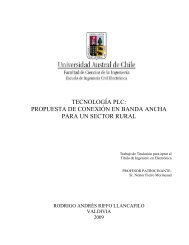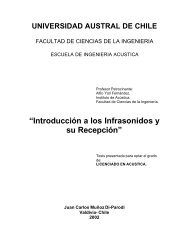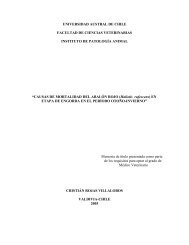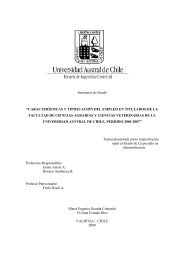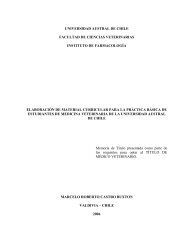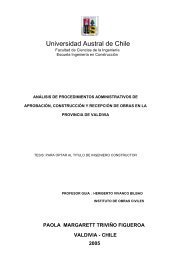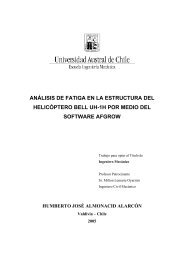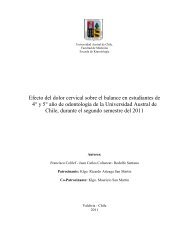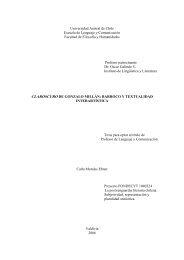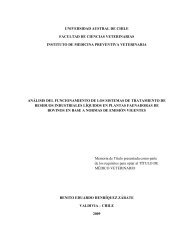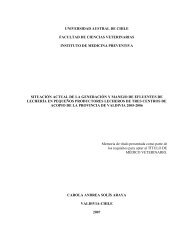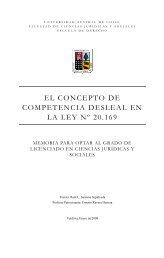Diversidad y control biológico de insectos - CyberTesis UACh ...
Diversidad y control biológico de insectos - CyberTesis UACh ...
Diversidad y control biológico de insectos - CyberTesis UACh ...
You also want an ePaper? Increase the reach of your titles
YUMPU automatically turns print PDFs into web optimized ePapers that Google loves.
a dose of 10 12 spores per ha was selected. Finally, no treated plots remained as <strong>control</strong>. All<br />
treatments were applied on 15 October 2003, spraying an equivalent to 200 L of tank mix<br />
per ha using a standard horizontal bar mounted on a tractor. Control plots were sprayed<br />
with water.<br />
Predator sampling.<br />
Surface predators were sampled by dry pitfall traps. Pitfall trap capture of individuals of the<br />
same taxa at different locations of the same habitat during the same time period can be<br />
compared as a measure of the relative abundance at each location (Maloney, 2002). Plastic<br />
cups (370 mL, 10 cm high, 5 cm diameter) drilled at bottom for drainage were used as<br />
traps. Sampling was performed once before spraying and three times after spraying (Fig. 1).<br />
In each sampling date, traps were active for 4 days and they were checked daily. We put<br />
twelve traps per plot, arranging them on 3 rows by 4 columns. The traps were put in the<br />
center of each plot and wi<strong>de</strong> mesh plastic net supported by woo<strong>de</strong>n sticks was used to avoid<br />
bird foraging on insects captured. Trap catches were pooled over each plot.<br />
All collected arthropods were placed into a 70% ethanol solution and stored until the<br />
samples could be sorted un<strong>de</strong>r a dissecting microscope. Arthropods were i<strong>de</strong>ntified<br />
comparing them to a reference collection held at Entomology Laboratory, Universidad<br />
Austral <strong>de</strong> Chile and with the help of specialists (see Acknowledgements).<br />
Statistical analysis.<br />
We use one-way analysis of variance to test for differences in relative abundance for each<br />
of the five predominant carabid species and two spi<strong>de</strong>r families as well as for all seven<br />
combined (see Table 1). No statistical analyses were performed on the rare species,<br />
although they were inclu<strong>de</strong>d in total trap analysis. When significant treatment effects were<br />
<strong>de</strong>tected, means were compared by Fisher’s least significant difference test (p=0.05). Data<br />
were transformed (log(x+1)) before analysis, which were performed in S-Plus software.<br />
Analyses were done separately in each sampling date.<br />
Results<br />
A total of 1608 individuals were captured in the sampling period. Ground predators were<br />
comprised by carabid beetles (11 species, 71%) and spi<strong>de</strong>rs (two families, 29%). The<br />
carabid assemblage was dominated by four species accounting by 89% of the captures:<br />
56



